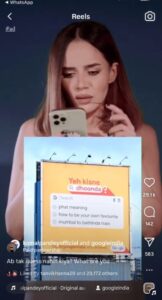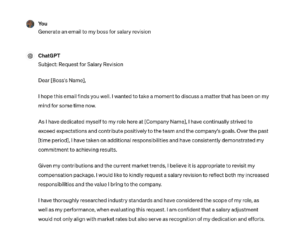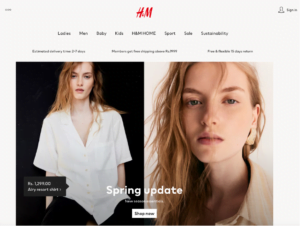
Do you remember the time when we all used to hear radio programs, read newspapers, and get to know about the events of the world through journalists?
Now we just know everything through social media platforms like Twitter or Instagram within seconds.
But have you ever wondered how does the news come to us this fast? And was it always like this?
After the pandemic, we saw a huge shift from offline platforms to online channels. Not only did we realize that it was possible to do what we all were doing offline but with ten times more effectiveness.
While the change in Digital PR became significant and visible only after the lockdown period, you won’t believe that digital PR and digital marketing have been changing rapidly over the last few years.
Before we dive into it more, let’s understand what digital PR actually is.
Digital Public Relations (PR) stands for the strategic use of online platforms and digital channels to enhance the reputation of a brand through the use of social media, content marketing, influencer collaborations, online industry publications, etc. which traditional PR used to do via press conferences, news stations, radio program etc.
In this article, we will talk about how digital PR has evolved in the last 8 years starting from 2016.
2016: The Emergence of Social Media Dominance
Shaadi.com #NotForSale campaign in 2016 not only educated people on the effects of dowry but also created a tsunami of tweets where everyone supported the campaign mentioning how men were not for sale in the efforts of eradicating dowry.
Not to mention how it benefitted shaadi.com to get more traffic and create awareness of the existing app.
Rise of Facebook, Twitter, and LinkedIn




Tweets from the #NotForSale campaign (shaadi.com)
The shift in the rise of social media platforms like Facebook, Twitter, and LinkedIn revolutionized PR strategies prompting organisations to embrace social media for brand promotions, customer engagement, and reputation management.
Early Shift Towards Influencer Marketing
A lot of people started posting videos across multiple platforms and the audience started getting influenced by them.
They wanted to know what kind of clothes they were wearing, and what kind of products they were using giving the push for brands to reach out to these influencers to promote their product or service giving rise to influencer marketing.
2017: Integration of Content Marketing
Smart Insights posted a research noting 2352 responses for the top-rated digital marketing techniques for 2017. These were the results:

Content as King: Changing PR Dynamics
People like Gary Vay-Ner-Chuk realized early on the power of content and what it can do. He predicted how social media is going to take the world by storm which is exactly what is happening now.
Visual content, including images, videos, and infographics gained attention conveying the brand message effectively.
SEO and Digital PR
Search Engine Optimization (SEO) started rising this year with Google’s announcement about the mobile index and Accelerated Mobile Pages (AMP) meaning that the page speed or the experience of mobile users with responsive design and mobile-friendly navigation became a ranking factor for mobile searches.
While online PR wasn’t as famous as traditional PR at the time, it started to get linked with content marketing, SEO, and social media.
2018: Data-Driven PR Approaches
If you are an Indian, you must remember the famous wink of Priya Prakash Varrier

Instagram went crazy over the video of Priya Varrier winking in a classroom scene
Analytics Tools and Insights
Organizations realized how content had the power to make you famous overnight. They started using advanced analytics tools to gain insights into audience behavior, campaign performance, and market trends. Through data analysis, brands started to see what people were seeing more of and started using that to their advantage.
Personalization and Targeting
Brands started to find their target audience. They begin to make content only for their specific audience segments for enhanced engagement and conversions for their business.
Measurement and ROI
Companies that measured the return on investment(ROI) of customer insights had a higher satisfaction level with customer insight’s contribution to the business. Measuring ROI started giving an upper hand to the company by reinforcing the power of their operations and earning them better.
2019: Rise of Digital Storytelling
By this time, people have started understanding the shift in the digital PR. Brands have started increasing their digital PR budget slowly focusing on influencer marketing and social networks.
Multimedia Storytelling Techniques
From interactive videos to user-generated content, brands understood the power of storytelling to connect with their audience on a deeper level.
Dominos campaign Dil Dosti dominos made everyone crave pizza slices with friends. The campaign aimed to strengthen the connection with the consumer by creating moments of togetherness with a pull at a cheese slice and fight for the last bite.

2020: Crisis Management in the Digital Age
This was the year when the pandemic happened and we had started seeing the cases of covid 19. The whole world was on lockdown.
This was also the year when Instagram launched reels and if we look back now, we can’t even imagine what it was like without it.
Real-Time Communication Challenges
Businesses suffered a huge loss because of the pandemic but also created a need for online resources to generate money. With the rapid spread of information online, it was really difficult to communicate in real-time.
Social Listening and Monitoring
Social listening tools became essential for tracking online conversations enabling brands to address issues promptly and mitigate reputational risks. This also became important to make fair marketing decisions.
2021: Collaboration with Digital Influencers
By the time we entered 2021, a lot of people had started making reels as they had a lot of free time during the pandemic. While a lot of companies were affected due to the lockdown, most of the brands started utilizing digital PR to their benefit.
Micro-Influencers vs. Macro-Influencers
Micro Influencers are the ones with a small or more niche-oriented following while the macro influencers are the ones with a large following. For small businesses, micro-influencers are more cost-effective and can also reach their target audience. While the macro influencers may be expensive, they have the potential to reach a vast audience with a single post

(Google collaborating with a macro fashion influencer Komal Pandey)
2022: The Role of AI and Automation
Do you remember how your life was before ChatGPT? How you used to generate emails yourself taking your sweet time.
Now, you do that and a lot of other things within seconds.

Email generated in less than 10 seconds via ChatGPT
AI-Powered PR Tools
While the field of artificial intelligence(AI) is constantly growing, this was the year majority of the people realized how they could streamline processes and enhance their efficiency through automation and AI-powered PR tools.
Future Trends and Predictions
Most fashion retailers use AI to predict the products that consumers are most likely to buy. Similarly, through previous data, they predict the shape and sizes of the product using AI predictive retailing models.

H & M stays on top of the local trends to be successful
2023: Continued Innovation and Adaptation
Digital PR continued to evolve with the emergence of new technologies and changing consumer behaviors. Brands adapted their strategies to leverage innovative tools and platforms, staying ahead of evolving trends and consumer preferences.
Coca-Cola’s “Create Real Magic” PR campaign was a fun way to engage and connect with fans. Like ChatGPT, AI art generator Dall-E was used to encourage customers to create their own AI artwork for the brand.

source: design rush
2024: Looking Ahead
Now in 2024, we are not only doing what we used to do but with new technologies, refining storytelling techniques, and advanced AI tools. We have seen a rise in virtual events and webinars. Social media and influencer marketing continue to amplify brand presence. The content we see is more personalized and customized for the target audience. The use of AI tools like ChatGPT, perplexity, and Google Bard has changed the digital PR world and will continue to do so.
We live in a digital landscape now. It is safe to say that digital PR and digital marketing are going to see changes that are beyond our imagination. We are not ready for what digital PR is going to bring to us.


